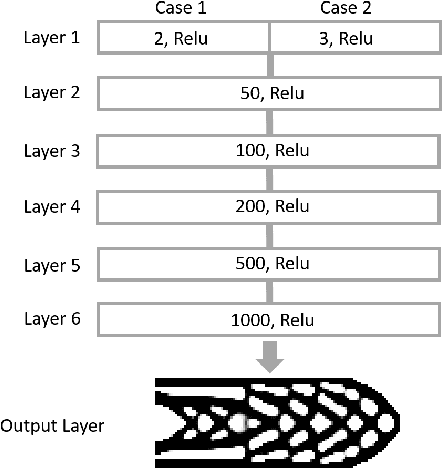Hope Yao
One-Shot Optimal Topology Generation through Theory-Driven Machine Learning
Jul 27, 2018



Abstract:We introduce a theory-driven mechanism for learning a neural network model that performs generative topology design in one shot given a problem setting, circumventing the conventional iterative procedure that computational design tasks usually entail. The proposed mechanism can lead to machines that quickly response to new design requirements based on its knowledge accumulated through past experiences of design generation. Achieving such a mechanism through supervised learning would require an impractically large amount of problem-solution pairs for training, due to the known limitation of deep neural networks in knowledge generalization. To this end, we introduce an interaction between a student (the neural network) and a teacher (the optimality conditions underlying topology optimization): The student learns from existing data and is tested on unseen problems. Deviation of the student's solutions from the optimality conditions is quantified, and used to choose new data points for the student to learn from. We show through a compliance minimization problem that the proposed learning mechanism is significantly more data efficient than using a static dataset under the same computational budget.
 Add to Chrome
Add to Chrome Add to Firefox
Add to Firefox Add to Edge
Add to Edge